A song sparrow sings for all to hear, deep in the heart of a sea buckthorn bush at the beach. © BCP 2010
No longer do we have to crow, so to speak, about every sign of spring, for it is surely exploding all around us. A walk just about anywhere now makes that a certainty.
My familiar habitat, Ashbridge’s Bay, is wonderfully alive with the joyous sound of our returning songbirds. How happy they sound as they lift their heads up, ruffle their feathers, and tweet, twitter, call, warn and warble their stories to all. What a fantastic organ the syrinx is — and how much we still have to learn about the wonders of birdsong.
On a quick trip around the peninsula today the songs burst from every bush and tree. I heard and saw innumerable song sparrows. There seemed to be, in fact, a song sparrow calling from the top of every tree in the park. And miracle of miracles, each and every one had a slightly different song.
Mrs. Cardinal with a tiny morsel of food she found on the ground on Good Friday. © BCP 2010
A couple of pairs of cardinals are always around, and they didn’t disappoint me today. Sometimes the pair near the parking lot are a little shy and play hard to get — especially with this photographer!. But the pair at the end of the peanut are usually heard — and quite often glimpsed. But they, too, are hard to photograph, staying as they usually do deep in the thatch of the bushes and trees at the terminus of the peninsula. But I got a bit lucky with the Mrs. She was down on the grass, hunting for seeds and I was just able to squeeze off a couple of shots. I’m including one here, even if it’s not perfect, because I do love the cardinals so much and I have so few good pictures of them.
Other songsters heard on my rounds were American goldfinches, yellow-crowned kinglets, multitudes of robins — of course! — and an army of blackbirds: starlings, red-wings and grackles.
There were lots of ducks adding to the cacophony, including buffies and long-tails that haven’t migrated yet. But they’ll be going any day now. And filling up the deeper registers of the sound palette, the relentless quack, quack, quack of the mallards and gadwalls.
© BCP 2010


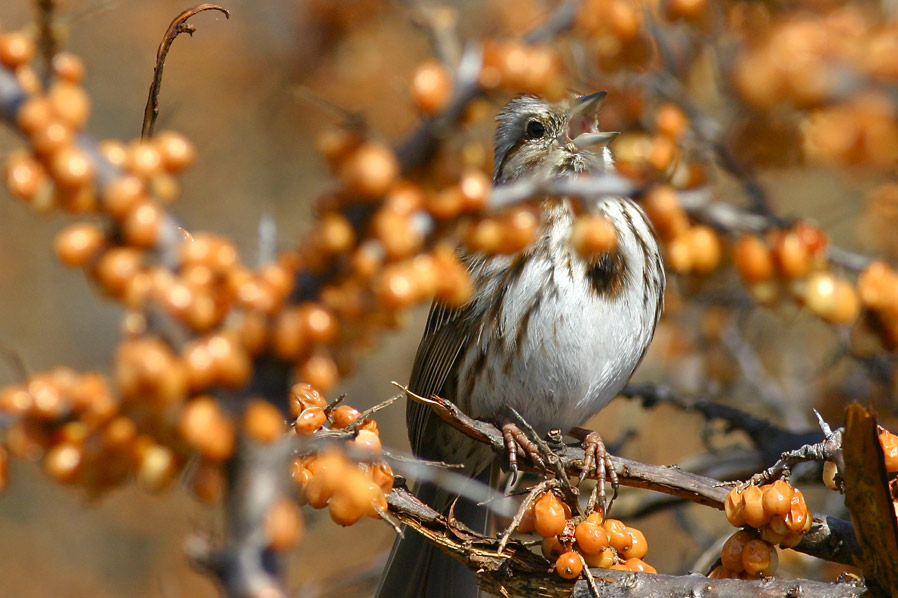
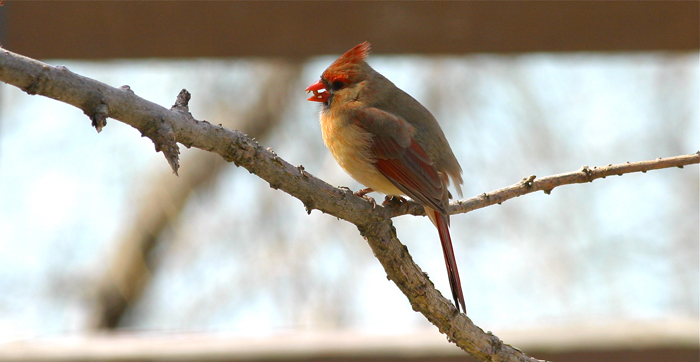
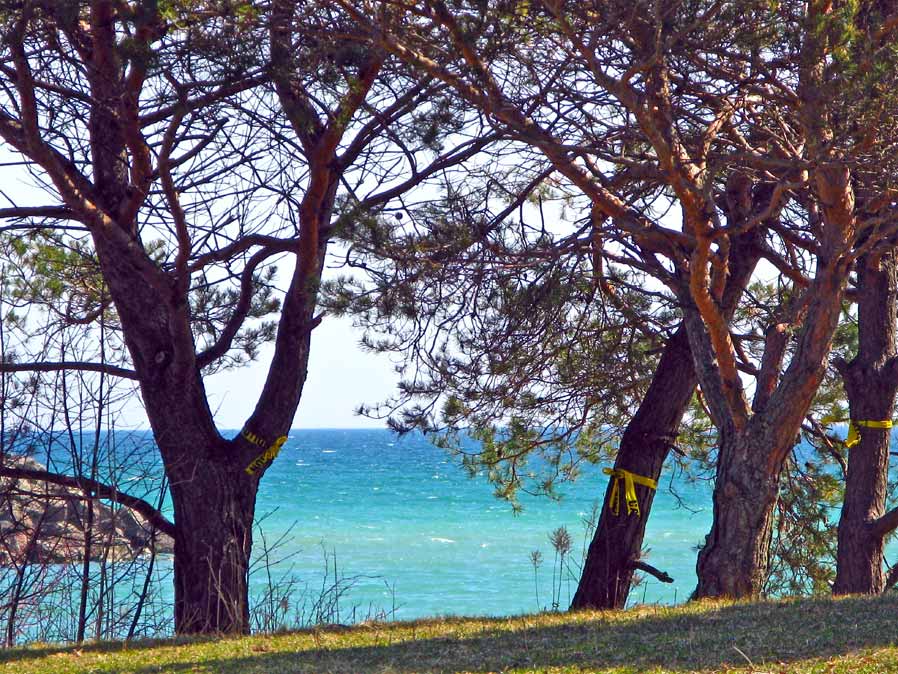
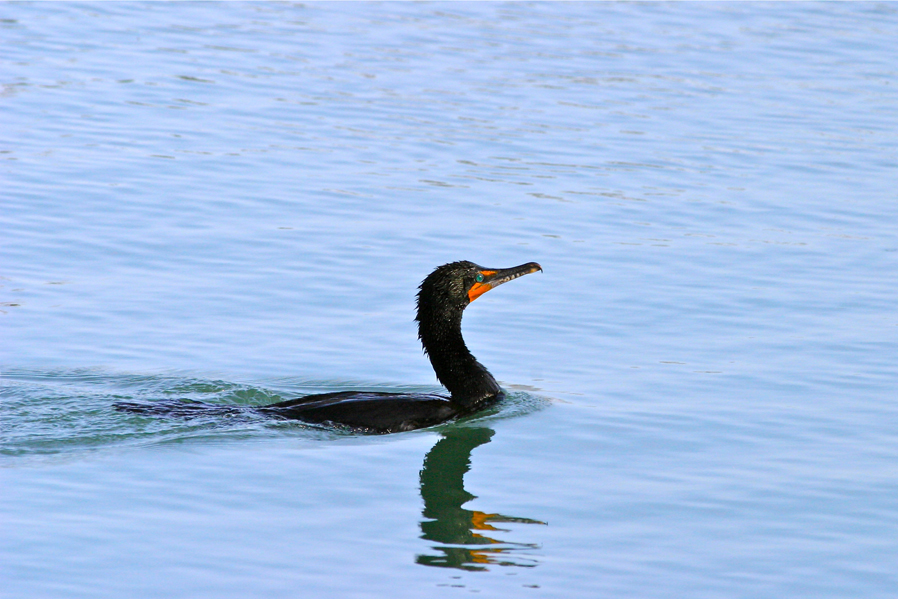
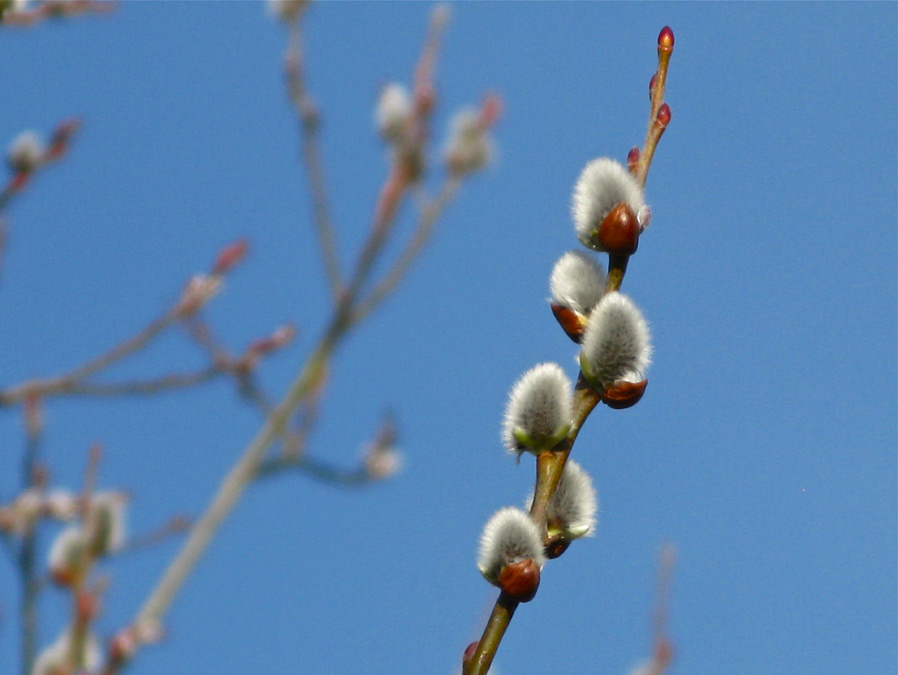
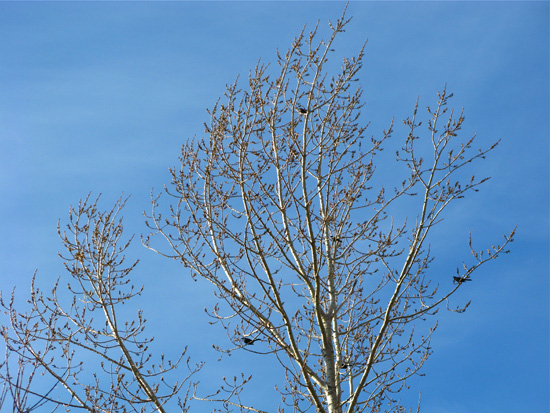
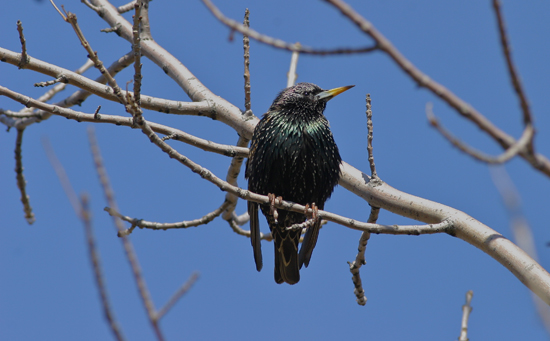
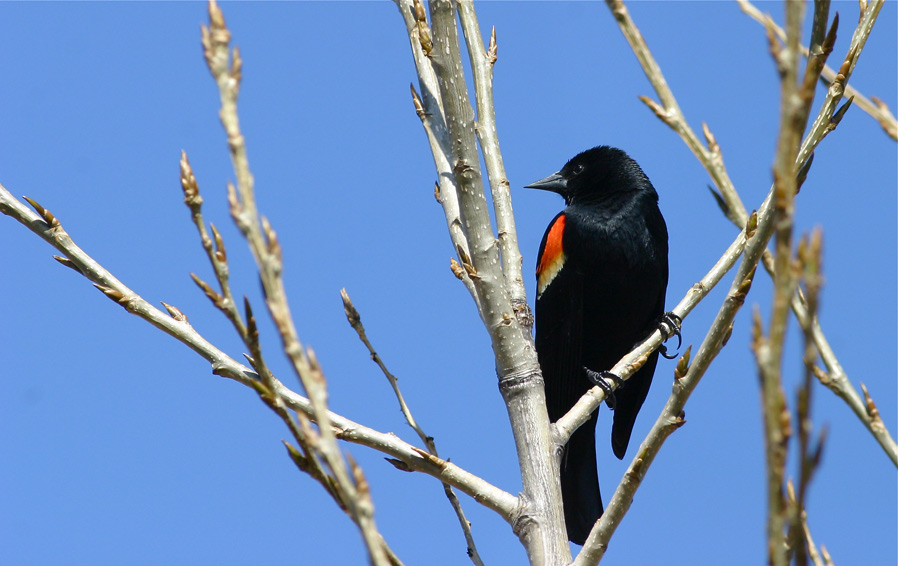

no comments